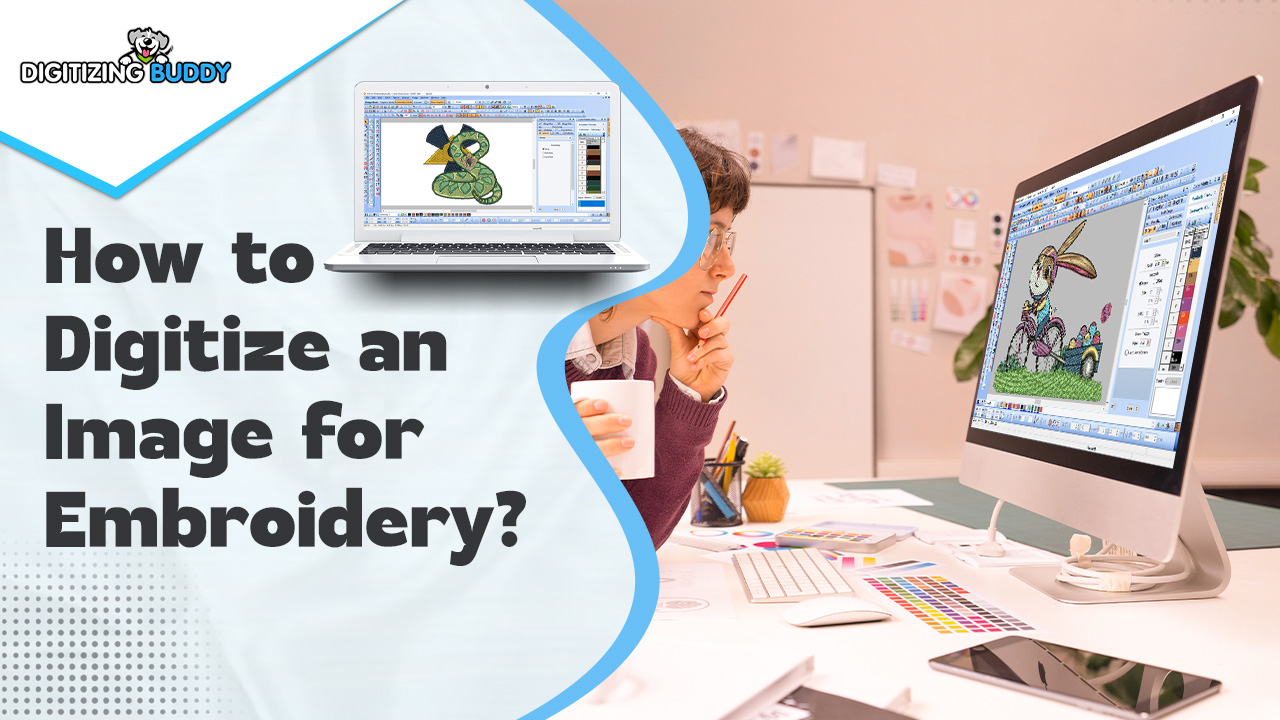Embroidery, with its timeless appeal, has adorned fabrics for centuries, telling stories and preserving traditions with every stitch. In today’s digital age, the art of digitizing images for embroidery has opened up new avenues for creativity, allowing designers to transform digital graphics into intricately embroidered masterpieces. But how does one navigate the intricate process of digitization while preserving the essence of the original image? Let’s embark on a journey to unravel the secrets on How to digitize an image for embroidery?
Understanding the Basics
Delving into the World of Embroidery Digitization
Embroidery digitization is the process of converting digital images into embroidery machine-readable formats. It involves translating intricate details, colors, and shapes into a series of commands that guide the embroidery machine’s needle and thread. This transformation requires a keen eye for detail and a deep understanding of both digital design and embroidery techniques.
Preparing the Image
Setting the Stage for Digitization
Before diving into digitization, it’s essential to prepare the image for embroidery. This involves selecting high-quality images with clear lines and distinct colors, as these elements will determine the clarity and precision of the final embroidery. Additionally, adjusting the image’s size and resolution to match the desired dimensions of the embroidery will ensure optimal results.
Choosing the Right Software
Navigating the Digital Toolbox
Selecting the right digitizing software is crucial for achieving the desired embroidery outcome. There are various software options available, each with its unique features and capabilities. From industry-standard software like Wilcom and Pulse to user-friendly options like Hatch Embroidery, choosing the software that best suits your needs is essential for a successful digitization process.
Digitizing Process
Decoding the Digital Blueprint
Once the image is prepared and the software is selected, it’s time to begin the digitization process. This involves breaking down the image into individual components, such as outlines, fills, and underlays, and assigning specific stitch types, colors, and densities to each element. The digitizer must meticulously analyze the image and make strategic decisions to ensure the final embroidery captures the essence of the original design.
Stitch Types and Density
Weaving the Fabric of Creativity
Selecting the appropriate stitch types and densities is crucial for achieving the desired texture and visual impact in the embroidery. Different stitch types, such as satin stitches for smooth surfaces and running stitches for outlines, offer varying degrees of coverage and texture. Similarly, adjusting the density of stitches can enhance or soften the appearance of the embroidery, adding depth and dimension to the final design.
Color Selection
Painting with Threads
Choosing the right colors is akin to wielding a paintbrush on a canvas. The digitizer must carefully select thread colors that closely match the hues of the original image, ensuring a seamless transition from digital to embroidered form. This requires a keen understanding of color theory and a discerning eye for subtle nuances in shade and tone.
Testing and Refinement
Iterating Towards Perfection
Once the digitization process is complete, it’s essential to test the design on a sample fabric to evaluate its appearance and make any necessary adjustments. This iterative process may involve tweaking stitch parameters, refining color selections, or fine-tuning stitch densities to achieve the desired result. Testing and refinement are integral steps in the digitization process, ensuring that the final embroidery meets the highest standards of quality and craftsmanship.
Final Production
Bringing the Design to Life
With the digitization process finalized and the design perfected, it’s time to bring the image to life through embroidery. The digitized design is loaded into the embroidery machine, where it guides the needle and thread with precision and accuracy. As the machine whirs to life, each stitch is meticulously executed, weaving a tapestry of colors and textures that faithfully replicates the original image.
Conclusion: Where Art Meets Technology
Embroidery digitization is a delicate dance between artistry and technology, where digital images are transformed into tactile works of art. By understanding the intricacies of the digitization process and leveraging the right tools and techniques, designers can breathe life into their digital creations, preserving tradition while embracing innovation. So whether you’re embroidery digitizer like Digitizing Buddy, or just starting on your embroidery journey, remember that the magic happens when art meets technology in the realm of embroidery digitization.

